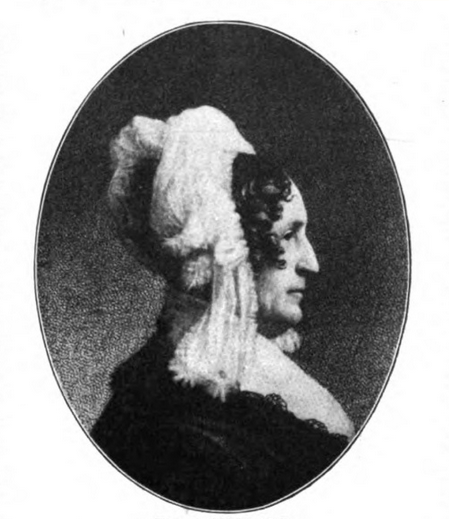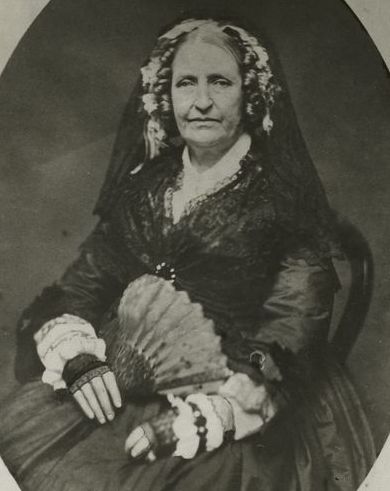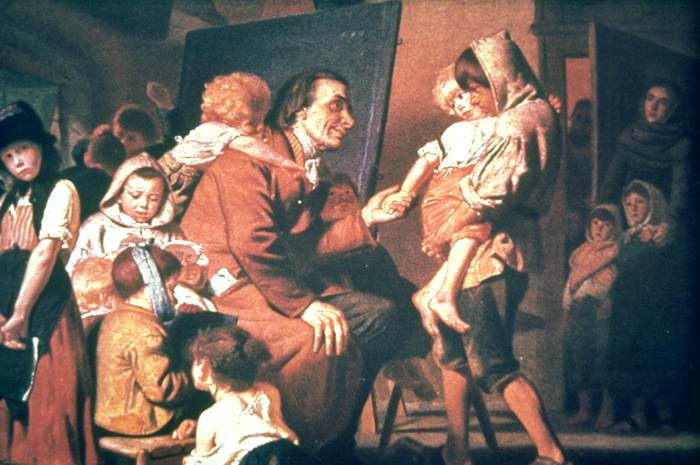|
Chronographer
A chronographer was a graphical representation of historical information devised by American educator Emma Willard in the mid-19th century. The chronographers intended to show historical information in a geographic and chronological context. The first graphic was ''Picture of Nations'', published in 1835, which showed civilizations as streams running through time, becoming wider and narrower as they gained or lost influence. She developed another chronographer, the ''Chronographer of American History,'' in 1844, showing the history of the United States as events marked on the branches of a tree. Later chronographers showed historical events within an imagined Ancient Greek temple; the ''Temple of Time'' (1846), ''American Temple of Time'' (late 1840s), ''English Chronographer'' (1849) and ''Chronographer of Ancient History'' (1851) are examples of this type. In these chronographers the floor was occupied with the streams of civilizations, as in the ''Picture of Nations''; the ... [...More Info...] [...Related Items...] OR: [Wikipedia] [Google] [Baidu] |
Emma Willard
Emma Hart Willard (February 23, 1787 – April 15, 1870) was an American woman's education activist who dedicated her life to education. She worked in several schools and founded the first school for women's higher education, the Troy Female Seminary in Troy, New York. With the success of her school, Willard was able to travel across the country and abroad, to promote education for women. The seminary was renamed the Emma Willard School in 1895 in her honor. Early life Emma Willard was born on February 23, 1787, in Berlin, Connecticut. She was the sixteenth of seventeen children from her father, Samuel Hart, and his second wife Lydia Hinsdale Hart."Person Detail Emma Hart Willard." Vermont Women's History Project. http://womenshistory.vermont.gov/?Tabld=61&personID=15. No longer online at this address; not found (yet) at Archive.org Her father was a farmer who encouraged his children to read and think for themselves. At a young age, Willard's father recognized her passion for ... [...More Info...] [...Related Items...] OR: [Wikipedia] [Google] [Baidu] |
Johann Heinrich Pestalozzi
Johann Heinrich Pestalozzi (, ; 12 January 1746 – 17 February 1827) was a Swiss pedagogue and educational reformer who exemplified Romanticism in his approach. He founded several educational institutions both in German- and French-speaking regions of Switzerland and wrote many works explaining his revolutionary modern principles of education. His motto was "Learning by head, hand and heart". Thanks to Pestalozzi, illiteracy in 18th-century Switzerland was overcome almost completely by 1830. Life Early years – 1746–1765 Pestalozzi was born on 12 January 1746, in Zürich, Switzerland. His father was a surgeon and oculist who died at age 33 when Pestalozzi, the second of three children, was five years old; he belonged to a family who had fled the area around Locarno due to its Protestant faith. His mother, whose maiden name was Hotze, was a native of Wädenswil on the lake of Zürich. The family also had a maid, Barbara Schmid, nicknamed Babeli. After the death of Pes ... [...More Info...] [...Related Items...] OR: [Wikipedia] [Google] [Baidu] |
French And Indian War
The French and Indian War (1754–1763) was a theater of the Seven Years' War, which pitted the North American colonies of the British Empire against those of the French, each side being supported by various Native American tribes. At the start of the war, the French colonies had a population of roughly 60,000 settlers, compared with 2 million in the British colonies. The outnumbered French particularly depended on their native allies. Two years into the French and Indian War, in 1756, Great Britain declared war on France, beginning the worldwide Seven Years' War. Many view the French and Indian War as being merely the American theater of this conflict; however, in the United States the French and Indian War is viewed as a singular conflict which was not associated with any European war. French Canadians call it the ('War of the Conquest').: 1756–1763 The British colonists were supported at various times by the Iroquois, Catawba, and Cherokee tribes, and the French ... [...More Info...] [...Related Items...] OR: [Wikipedia] [Google] [Baidu] |
New England Confederation
The United Colonies of New England, commonly known as the New England Confederation, was a confederal alliance of the New England colonies of Massachusetts Bay, Plymouth, Saybrook (Connecticut), and New Haven formed in May 1643. Its primary purpose was to unite the Puritan colonies in support of the church, and for defense against the Native Americans and the Dutch colony of New Netherland. It was the first milestone on the long road to colonial unity and was established as a direct result of a war that started between the Mohegan and Narragansett Indian tribes. Its charter provided for the return of fugitive criminals and indentured servants, and served as a forum for resolving inter-colonial disputes. In practice, none of the goals were accomplished. The confederation was weakened in 1654 after Massachusetts Bay refused to join an expedition against New Netherland during the First Anglo-Dutch War, although it regained importance during King Philip's War in 1675. It was di ... [...More Info...] [...Related Items...] OR: [Wikipedia] [Google] [Baidu] |
World Tree
The world tree is a motif present in several religions and mythologies, particularly Indo-European religions, Siberian religions, and Native American religions. The world tree is represented as a colossal tree which supports the heavens, thereby connecting the heavens, the terrestrial world, and, through its roots, the underworld. It may also be strongly connected to the motif of the tree of life, but it is the source of wisdom of the ages. Specific world trees include ''égig érő fa'' in Hungarian mythology, Ağaç Ana in Turkic mythology, Andndayin Ca˙r in Armenian mythology, Modun in Mongol mythology, ''Yggdrasil'' in Norse mythology, Irminsul in Germanic mythology, the oak in Slavic, Finnish and Baltic, Iroko in Yoruba religion, ''Jianmu'' in Chinese mythology, and in Hindu mythology the '' Ashvattha'' (a ''Ficus religiosa''). General description Scholarship states that many Eurasian mythologies share the motif of the "world tree", "cosmic tree", or "Eagle and ... [...More Info...] [...Related Items...] OR: [Wikipedia] [Google] [Baidu] |
Willards Chronographer Of American History 1845
Willards may refer to: In organizations * Members of the Lincoln-Lee Legion, an early 20th-century temperance group In places * Willards, Maryland, a town in the United States *Willards, a former Los Angeles chicken restaurant that Cecil B. DeMille and partners bought in 1940 and converted to the Los Feliz Brown Derby See also * Willard (other) {{disambig ... [...More Info...] [...Related Items...] OR: [Wikipedia] [Google] [Baidu] |
Christopher Columbus
Christopher Columbus * lij, Cristoffa C(or)ombo * es, link=no, Cristóbal Colón * pt, Cristóvão Colombo * ca, Cristòfor (or ) * la, Christophorus Columbus. (; born between 25 August and 31 October 1451, died 20 May 1506) was an Italian explorer and navigator who completed four voyages across the Atlantic Ocean sponsored by the Catholic Monarchs of Spain, opening the way for the widespread European exploration and colonization of the Americas. His expeditions were the first known European contact with the Caribbean, Central America, and South America. The name ''Christopher Columbus'' is the anglicisation of the Latin . Scholars generally agree that Columbus was born in the Republic of Genoa and spoke a dialect of Ligurian as his first language. He went to sea at a young age and travelled widely, as far north as the British Isles and as far south as what is now Ghana. He married Portuguese noblewoman Filipa Moniz Perestrelo, who bore his son Diego, and w ... [...More Info...] [...Related Items...] OR: [Wikipedia] [Google] [Baidu] |
Modern History
The term modern period or modern era (sometimes also called modern history or modern times) is the period of history that succeeds the Middle Ages (which ended approximately 1500 AD). This terminology is a historical periodization that is applied primarily to European and Western history. The modern era can be further divided as follows: * The early modern period lasted from c. AD 1500 to 1800 and resulted in wide-ranging intellectual, political and economic change. It brought with it the Age of Enlightenment, the Industrial Revolution and an Age of Revolutions, beginning with those in America and France and later spreading in other countries, partly as a result of upheavals of the Napoleonic Wars. * The late modern period began around 1800 with the end of the political revolutions in the late 18th century and involved the transition from a world dominated by imperial and colonial powers into one of nations and nationhood following the two great world wars, World War I ... [...More Info...] [...Related Items...] OR: [Wikipedia] [Google] [Baidu] |
Middle Ages
In the history of Europe, the Middle Ages or medieval period lasted approximately from the late 5th to the late 15th centuries, similar to the post-classical period of global history. It began with the fall of the Western Roman Empire and transitioned into the Renaissance and the Age of Discovery. The Middle Ages is the middle period of the three traditional divisions of Western history: classical antiquity, the medieval period, and the modern period. The medieval period is itself subdivided into the Early Early may refer to: History * The beginning or oldest part of a defined historical period, as opposed to middle or late periods, e.g.: ** Early Christianity ** Early modern Europe Places in the United States * Early, Iowa * Early, Texas * Early ..., High Middle Ages, High, and Late Middle Ages. Population decline, counterurbanisation, the collapse of centralized authority, invasions, and mass migrations of tribes, which had begun in late antiquity, continued i ... [...More Info...] [...Related Items...] OR: [Wikipedia] [Google] [Baidu] |
Ancient World
Ancient history is a time period from the beginning of writing and recorded human history to as far as late antiquity. The span of recorded history is roughly 5,000 years, beginning with the Sumerian cuneiform script. Ancient history covers all continents inhabited by humans in the period 3000 BCAD 500. The three-age system periodizes ancient history into the Stone Age, the Bronze Age, and the Iron Age, with recorded history generally considered to begin with the Bronze Age. The start and end of the three ages varies between world regions. In many regions the Bronze Age is generally considered to begin a few centuries prior to 3000 BC, while the end of the Iron Age varies from the early first millennium BC in some regions to the late first millennium AD in others. During the time period of ancient history, the world population was already exponentially increasing due to the Neolithic Revolution, which was in full progress. While in 10,000 BC, the world population stood ... [...More Info...] [...Related Items...] OR: [Wikipedia] [Google] [Baidu] |
Christ
Jesus, likely from he, יֵשׁוּעַ, translit=Yēšūaʿ, label= Hebrew/Aramaic ( AD 30 or 33), also referred to as Jesus Christ or Jesus of Nazareth (among other names and titles), was a first-century Jewish preacher and religious leader; he is the central figure of Christianity, the world's largest religion. Most Christians believe he is the incarnation of God the Son and the awaited Messiah (the Christ) prophesied in the Hebrew Bible. Virtually all modern scholars of antiquity agree that Jesus existed historically. Research into the historical Jesus has yielded some uncertainty on the historical reliability of the Gospels and on how closely the Jesus portrayed in the New Testament reflects the historical Jesus, as the only detailed records of Jesus' life are contained in the Gospels. Jesus was a Galilean Jew who was circumcised, was baptized by John the Baptist, began his own ministry and was often referred to as "rabbi". Jesus debated with fe ... [...More Info...] [...Related Items...] OR: [Wikipedia] [Google] [Baidu] |
Willard Picture Of Nations 1835
Willard may refer to: People * Willard (name) Geography Places in the United States * Willard, Colorado * Willard, Georgia * Willard, Kansas *Willard, Kentucky * Willard, Michigan, a small unincorporated community in Beaver Township, Bay County, Michigan * Willard, Missouri * Willard, New Mexico * Willard, New York * Willard, North Carolina * Willard, Ohio * Willard, Utah * Willard Bay, Utah, a reservoir * South Willard, Utah * Willard, Virginia * Willard, Washington * Willard, Rusk County, Wisconsin, a town * Willard, Clark County, Wisconsin, an unincorporated community * Willards, Maryland Places other than settlements * The Willard InterContinental Washington, a historic hotel in Washington, DC * Willard House (other), several houses * Willard Residential College, a Northwestern University residential hall * J. Willard Marriott Library, at the University of Utah * University of Illinois Willard Airport * Willard Drug Treatment Center, a specialized ... [...More Info...] [...Related Items...] OR: [Wikipedia] [Google] [Baidu] |








